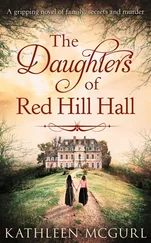Thomas Keneally
THE DAUGHTERS OF MARS
A Novel
To the two nurses, Judith and Jane
The punctuation used in this narrative might seem occasionally eccentric, but is designed to honor that of the forgotten private journals of the Great War, written by men and women who frequently favored dashes rather than commas. Many of the smaller locations and institutions in this novel are fictional, though based generally on the medical installations of the period.
The incidents involving the hospital ship Archimedes are based broadly on what befell the hospital ship Marquette , in which valiant New Zealand nurses served. I hope New Zealanders will forgive my appropriating some of the Marquette material for my own purposes. As well, the involvement of an Irish regiment in these matters is fictional, and not meant to cast reflection on any venerable regiment.
The clearing station at Deux Églises did not exist (though one existed at a small village named Trois Arbres more or less in the same location). Similarly, the clearing station of Mellicourt is fictional in name, but not in terms of the labors undertaken there by nurses. The château named Baincthun never existed, but, in a similar location, the prototype of the formidable Lady Tarlton of the novel—in real life a woman of lively intelligence and great beauty named Lady Dudley—ran a similar Australian voluntary hospital. I hope these few liberties do not detract from the enjoyment of this tale.
It was said around the valley that the two Durance girls went off but just the one bothered to come back. People could not have said which one, since both the girls were aloof and looked similar—dark and rather tall. There was confusion even in the local paper. And they weren’t the sort of girls whose names were called across streets—girlfriend hallooing girlfriend in the excitement of Kempsey’s big shopping days. Before the war it was the younger one—wasn’t it?—who stayed at home with her parents. The slightly shorter one, anyhow. And it was she who took her mother, Mrs. Durance, to visit the surgeon in Sydney. But what could those Macquarie Street doctors do?
• • •
After a choppy night’s passage down the coast aboard the Currawong, Mrs. Durance finally fell asleep off Broken Bay, only to be woken, as the steamer entered the Sydney Heads, by a steward bearing tea—Sally being on deck at the time for the experience of the approach to Port Jackson.
Mother and daughter had time for another cup of tea at the wharf in Darling Harbour before Sally took the exhausted Mrs. Durance to the surgeon’s rooms in Macquarie Street. After an examination by this eminent man, she was sent from his office to Sydney Hospital for X-rays. Then she and Sally met up with Naomi, the other daughter, the one who was considered a bit flash—Macleay District Hospital not good enough for her—who’d been in Sydney a few years.
They went that afternoon for a bang-up tea at Cahill’s, while they waited for the expert men who read the body’s inner secrets from photographs to discover what was wrong with Mrs. Durance. The sisters knew their mother had understated her pain to them. They knew she was secretive about the scale of her bleeding and the urine coming out of the wrong opening.
That night, Naomi put them up in her little flat in Bondi Junction—Mama sharing Naomi’s bed, Sally on the sofa. They could have all stayed at Mrs. Durance’s younger sister Jackie’s place at Randwick, but Mrs. Durance didn’t want to share news of her health problems with her sister yet. Both Sally and Naomi woke several times to their mother’s choked-down groans. But unblunted ambition seemed to declare itself the next morning in the briskness with which Naomi put on her uniform and her scarlet cape to go to her duty at Royal Prince Alfred Hospital.
There had always been something larger than her beginnings written in Naomi Durance’s gestures and her long bones. Her parents knew it. She had left them for the city, but in so far as they were boastful, they boasted of her. Sally worked a mere three miles from home, across the river, at the Macleay District Hospital. Merit in that, no one denied, and loyalty. But it was news of Naomi that made eyes shine on the Durance farm.
It was cervical cancer, the surgeon told Mrs. Durance the next morning. There was no option of an operation, for it would be a very long, painful, and dangerous procedure, and could not hope to get all of the proliferating cancer. Surgery was to be recommended chiefly in the early stages, whereas metastasis had already occurred, as the X-rays showed. If she rested well and ate lots of fruit, he said, she could expect to live at least a year. She was a dairy farmer’s wife? Well, no more butter churning, he said, and no early morning milking. He would give her a script for pain medicine, he told her. He would also be writing to her doctor in the Macleay so that he could keep her comfortable.
You are fortunate to have two daughters who are registered nurses, he told her.
I am, she said, glowing with pride but hollowed by pain.
She and Sally caught the regular outward journey of the Currawong home the next night. Naomi saw them off at Darling Harbour, in the shadow of those shameful slums of the Rocks. From them bubonic plague had come boiling forth in the girls’ childhoods and been carried north on the Currawong by a rat nestled in a furniture case. Naomi waited in their small cabin until the last call to go ashore and then stayed on the wharf to wave a futile handkerchief, as if she were part of one of those heartbreaking paintings of emigrant farewell.
She’s so beautiful, isn’t she, Sal? asked Mrs. Durance, leaning on the railing from pain rather than as a gesture of languid seafaring. She has a lot of grace, doesn’t she?
As they reached on a black tide for Dawes Point, the handkerchief still waved, more luminous than Naomi’s face. Bush people did that handkerchief-waving stuff and it gave them away as hayseeds. But worldly Naomi risked that tonight. She had promised she’d come up as often as she could and help Sally out. But that she would remain a city woman was not questioned.
It was a brisk night, and Mrs. Durance developed a cold on top of all else. She again fell asleep late. Again Sally came on deck at dawn and looked out at the blue surge of the tide breaking on the yellow sand of Trial Bay and making enough water at the river bar to allow the Currawong to enter.
• • •
For six months Mrs. Durance ate her fruit and sat in sumps of sunlight on the veranda. But the cancer owned her by night. Sally still worked the day shift at Macleay District but now slept on call in the same room as her mother, her father having moved to a lean-to at the back of the homestead. Sally was to administer a sixth of a grain of morphine hypodermically when brave and reticent Mrs. Durance confessed, one way or another, to agony. Naomi took her holidays and came home on a visit and gave her sister a break from the regimen. In between, Mr. Durance paid their neighbor Mrs. Sorley’s girl to sit with Mrs. Durance by day and was attentive himself. Since Mr. Sorley had been killed by a native cedar—which when cut had slipped sidewards rather than forwards—the Sorley kids were ever ready for employment.
Sally noticed more clearly now that though her father and mother were souls of decency, Eric Durance moved about the bedroom as if he and his wife were acquaintances only. He seemed to fear he might be seen as an intruder. There had always been that distant courtesy between her parents. Sally knew they’d infected Naomi and her with it too. It might be one of the reasons Naomi had cleared out—in the hope that on a different stage she might have a franker soul.
Читать дальше













